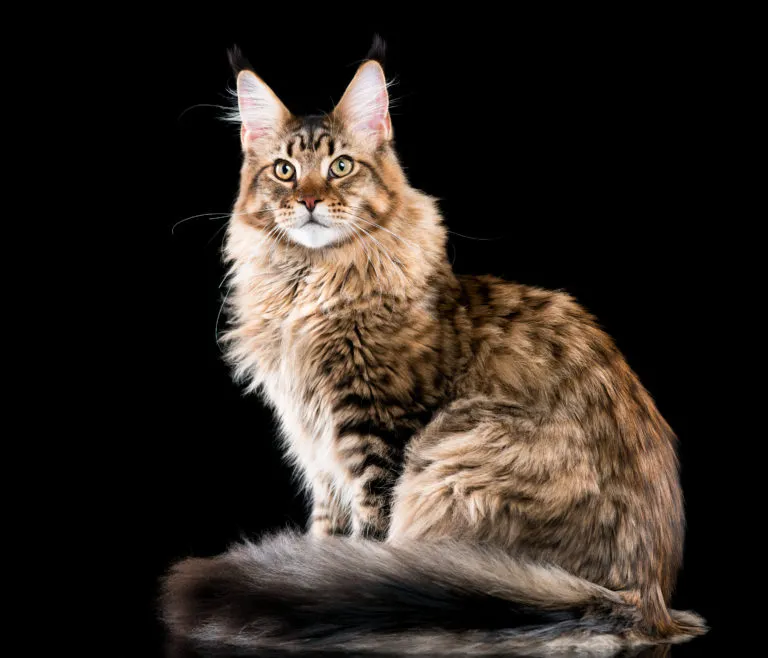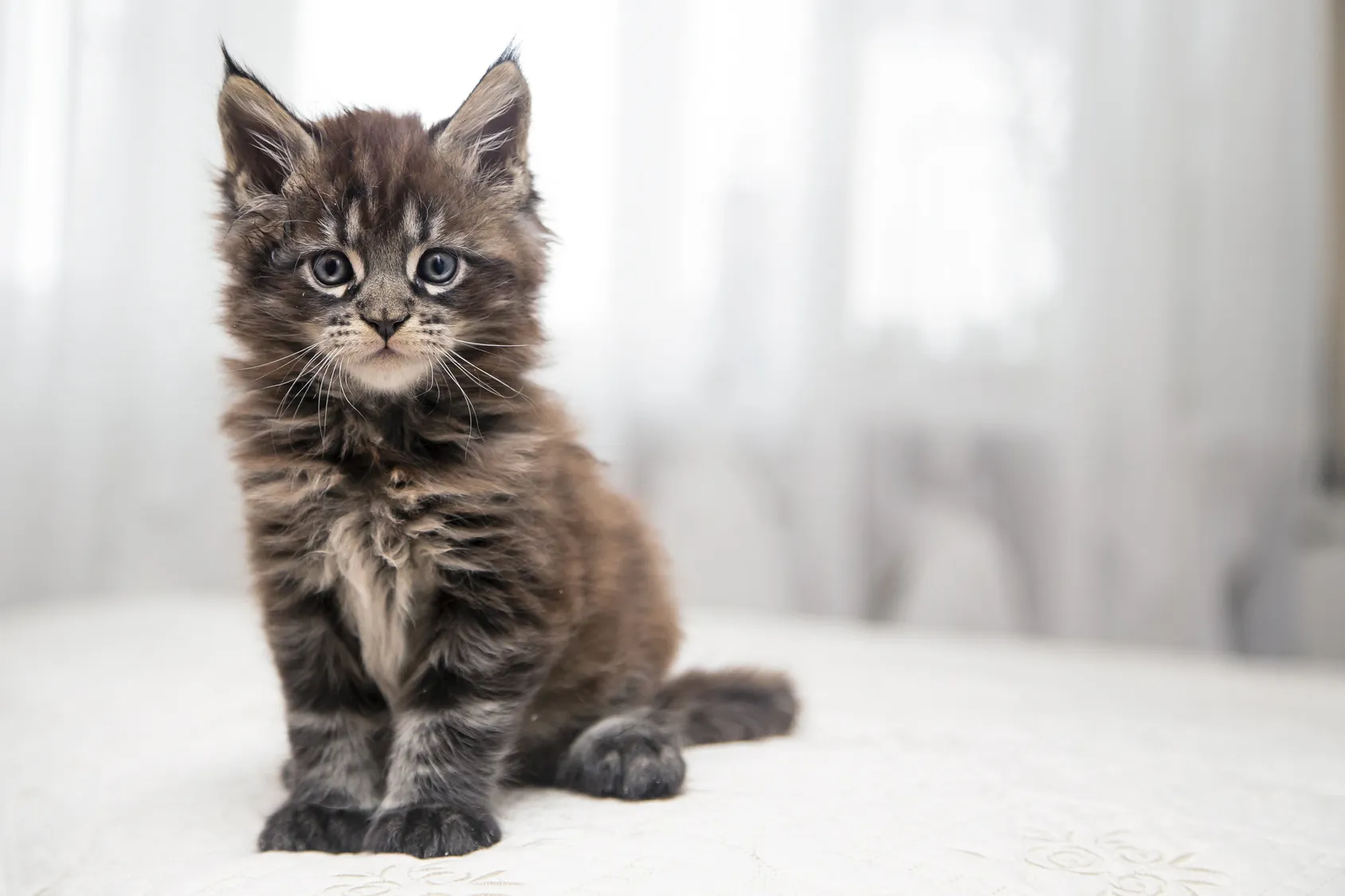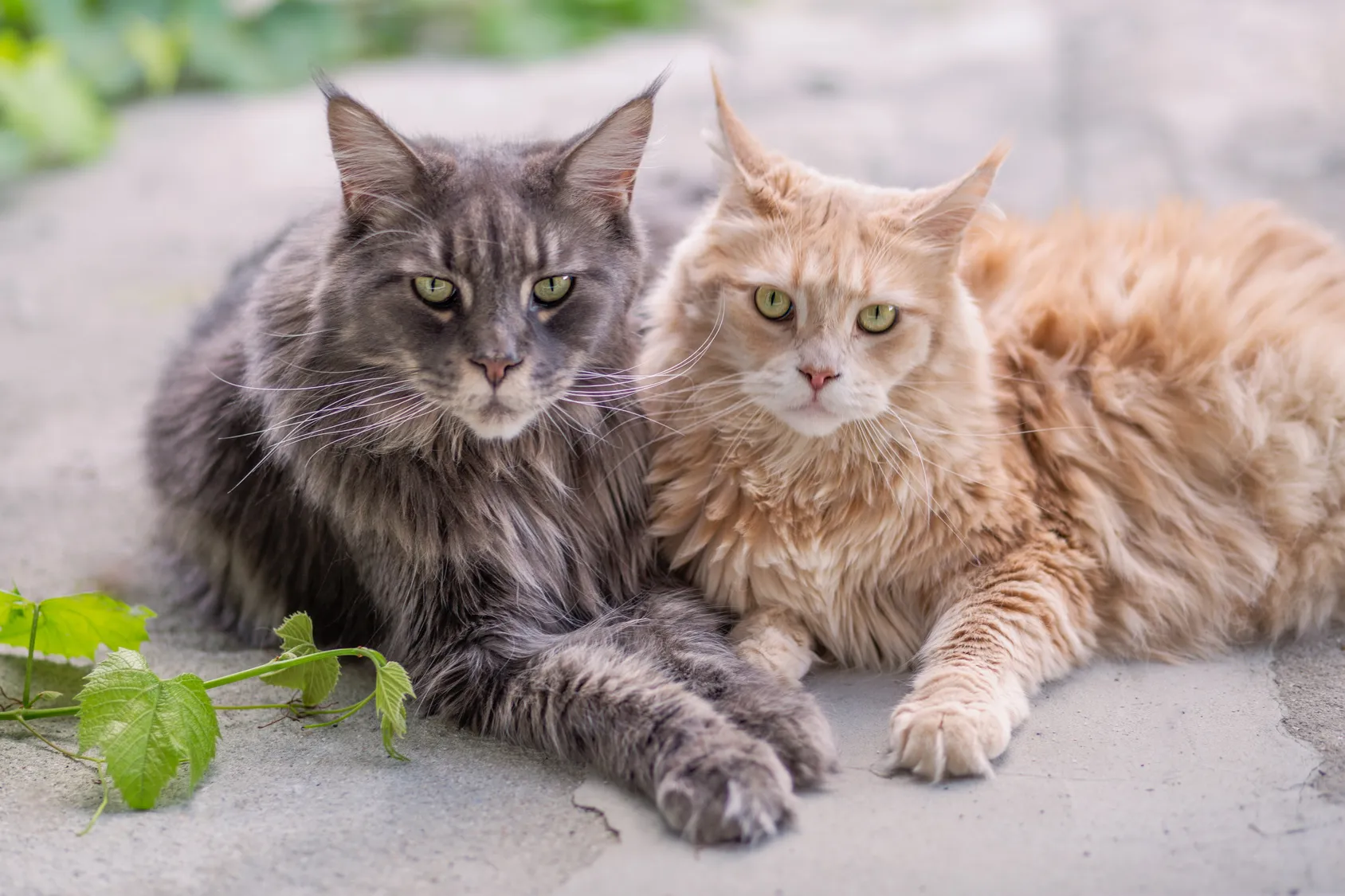Maine Coon
The Maine Coon has now become one of the most popular cat breeds in the world and is enjoying increasing popularity in Ireland, too. This is probably thanks to its authenticity, robustness and excellent character.
The Maine Coon has now become one of the most popular cat breeds in the world and is enjoying increasing popularity in Ireland, too. This is probably thanks to its authenticity, robustness and excellent character.

The Maine Coon comes from Maine/USA, as the name suggests. In fact, they are most likely to be related to the large Norwegian Forest Cat and the Siberian Cat. There are many legends about its heritage, including wild claims that it is a mix between a cat and a raccoon. Being skilled hunters, it’s likely their ancestors were used on immigrant ships on their way to America to eliminate rats and mice. This breed was then completely forgotten, before becoming popular again in the 1950s and making regular appearances at breed shows.
Did you know that the Maine Coon is known as America’s first show cat? People from Maine were convinced that these were the smartest, fastest, strongest and, therefore, the best of all cat breeds. As far back as the 18thcentury they began comparing their Maine Coon cats with other breeds at rural folk festivals.

Maine Coons are very loving and sociable animals. They enjoy playing, are intelligent and can even learn little tricks. It has reported that some Coonies have even been taught to fetch. Unlike most cat breeds, Maine Coons are known for liking water. If a Maine Coon is kept alone, it needs plenty of human affection. Equally, Maine Coons like to make their voice heard, and their sweet cooing and miaowing will accompany you throughout the day. They are sociable and tolerable of other animals and children. They can be kept purely as domestic cats without any problems, making them suitable for working people. However, they love exercise and are very active, meaning that as domestic cats they should still get sufficient opportunities to let off steam.
The average weight for a Maine Coon is between 6 to 8kg. Cats should weigh up to 5kg. The body is muscular with a broad chest, should be elongated and appear angular. Maine Coons can reach a length of up to 1.20m. They have large pointed ears with tufts of hair on the ends. This breed’s fur is waterproof with a thick undercoat, stiff top hair and a bushy tail, which should be roughly as long as the body. The fur can be found in all possible varieties apart from the colour gold. The Maine Coon’s legs are powerful, muscular, wide apart, medium in length and well-proportioned. The paws are large and round with tufts of fur. With some cats, the tufts of fur on the paw pads are so long that they stick out almost 2cm between the claws. There is no explicit breed standard for Maine Coons in principle. It depends on the association to which the breeder belongs and the differences between breed standards are very minimal. Some Maine Coons can be affected by polydactyly, a genetic defect with which cats are born with six or seven claws.

As former working cats, Maine Coons make skilled hunters. These intelligent cats generally enjoy retrieving and really love water, so don’t be surprised if your Maine Coon won’t skip a single watering hole and enjoys playing with its water bowl. Likewise, scratching posts and sleeping spots should be adapted to the huge size of this breed. Appropriate height and stability are important. Find out in our “perfect scratching post” article how to choose the right cat tree. Although Maine Coons are considered affectionate, they should be given opportunities to retreat, such as cat houses. Make sure to opt for the right size when choosing a litter box. The bigger the better applies here and is more pleasant for the cat! Maine Coons can be socialised with other cats without any problems, though you should make sure that other cat breeds are also sociable in nature. Since Coonies are very active and love exercise, you should provide enough opportunities for them to move around, especially if they are kept purely as domestic cats. For instance, a balcony or terrace that is safe for cats can be fitted. It’s also possible to take Maine Coons out on a cat lead, although you should practise this in your home beforehand. Cat toys such as intelligence toys should be on hand to keep these clever felines occupied.
One would expect the fur of a semi-longhair cat to be rather high-maintenance, but contrary to all expectations, the Maine Coon is not overly demanding in this respect. This is because Coonies have very little undercoat and only semi-long top hair, hence knots don’t form as easily. It’s therefore sufficient for you to carefully comb the Maine Coon’s fur once a week. During the moulting period, however, you should deal with your Maine Coon’s fur more regularly. Bear in mind too to check the fur of cats with outdoor access for parasites.
Maine Coons are large, active cats with a strong urge for exercise, therefore they need a sufficiently large intake of calories. Different circumstances play a role in these cats’ diet too. For instance, older cats need a different quantity of nutrients to their younger counterparts. With kittens in particular, you should make sure they receive the right amount of energy to guarantee optimal development. The cat’s state of health and weight also influences the required amount of nutrients. When choosing a cat food, make sure it has high-quality ingredients predominantly featuring meat. However, sugar, preservatives, grain and animal by-products should only feature in small quantities. Your furry friend naturally loves treats, but the quantity should stay within limits. You should keep an eye on your Maine Coon’s weight, because obesity can lead to painful joint problems.
Offer your Coonies cat grass. Many Maine Coons swallow a lot of hair during grooming that forms balls in the stomach. Cat grass helps them to vomit up the hairs by encouraging the gag reflex.
BARF and self-cooking are further possibilities for the Maine Coon’s diet. Before you choose one of these methods, you should research them in depth to prevent nutrient deficiency. Never serve raw pork, because it can transmit Aujeszky’s disease. Cook it through thoroughly before serving.
Coonies need sufficient water available to them. As with all cats don’t give them milk because cats are lactose intolerant by nature. However, they do tolerate well special cat milk with a reduced amount of lactose. Though offer this as a snack and not instead of water.
The Maine Coon has now become one of the most popular cat breeds in the world and is enjoying increasing popularity in Ireland, too. This is probably thanks to its authenticity, robustness and excellent character.
Neva Masquerade – a mysterious name for a mysterious thing of beauty! The Neva Masquerade is the point variation on the Siberian cat and shares many characteristics with this breed.